The diverse array of things to do in Valencia, Spain’s third-largest metropolis, are as captivating and timeless as the city itself. From classical cathedrals and creative architecture to coastal escapes and a compelling culinary scene, the city boasts a forward-thinking air and yet still retains a traditional soul.
Best of all, Valencia’s center is compact and easy to explore, whether you’re on foot or perhaps on two wheels. You’ll find green space, sunlit squares, cobbled alleyways, and colorful markets.
Whether you’re keen to relax on an urban beach, lose yourself in the labyrinth of historic streets, or hop between contemporary museums and aged architecture, these are the best things to do in Valencia, Spain.
Admire Valencia Cathedral, El Miguelete and Basílica
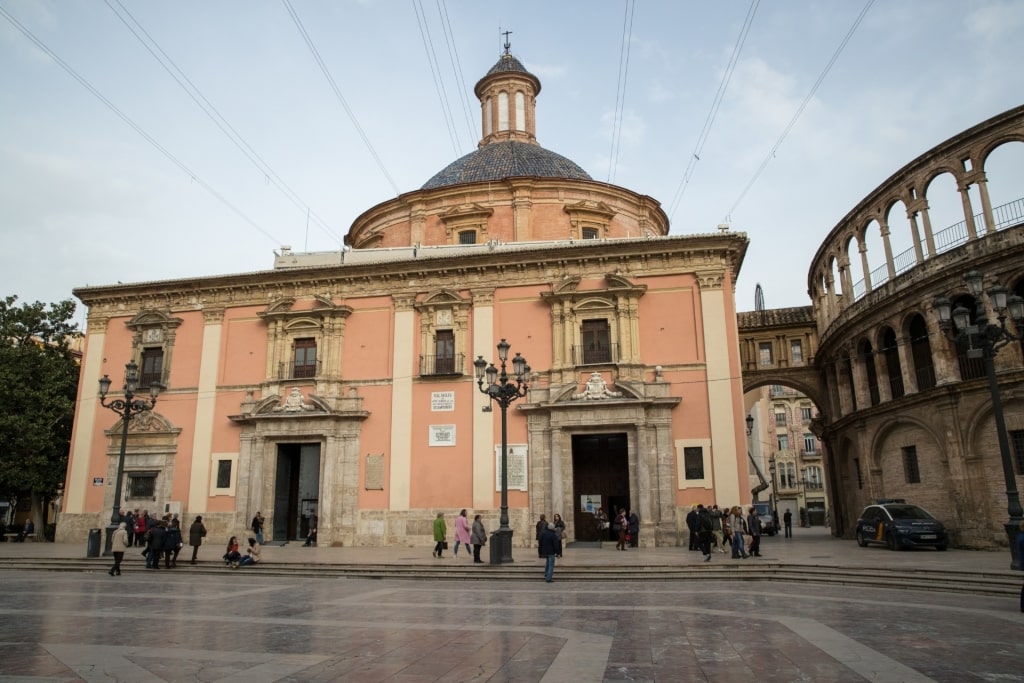
Basilica of the Virgen
A visit to the beautiful Spanish city of Valencia is best begun in its historical core, the Ciutat Vella. Here, a trio of Valencia’s finest architectural gems can be found clustered together—the Cathedral, El Miguelete Tower, and the Basilica of the Virgen.
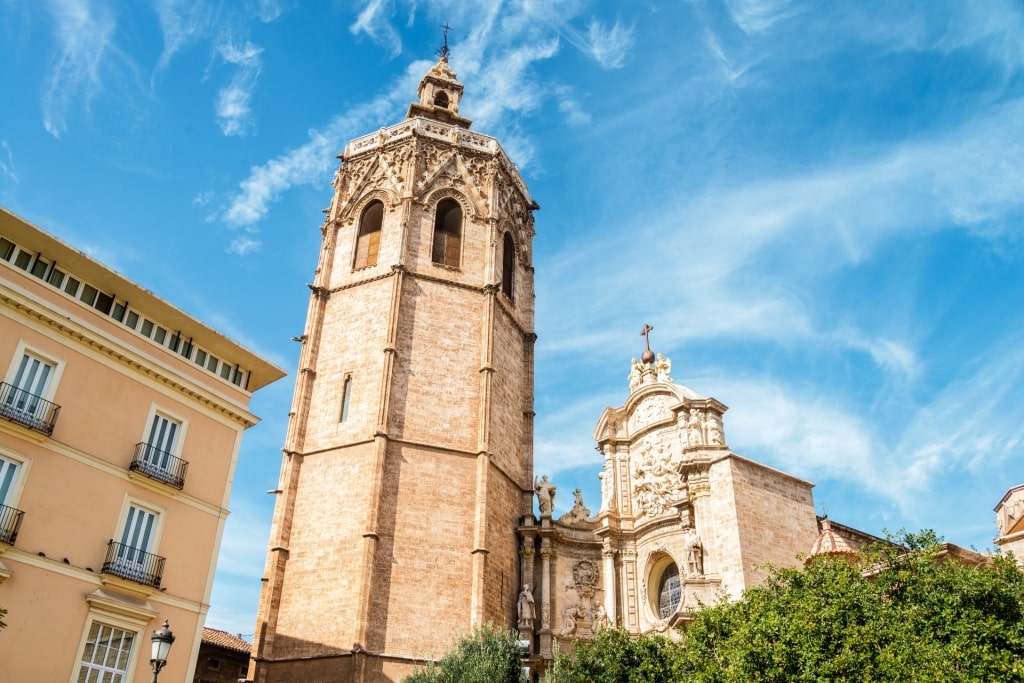
El Miguelete
If you’re feeling energetic, climb the 207 steps to the belfry of the El Miguelete, a 164-foot-high hexagonal bell tower. From above, the city spills out before you, providing picturesque rooftop panoramas and a fantastic orientation of the urban area.
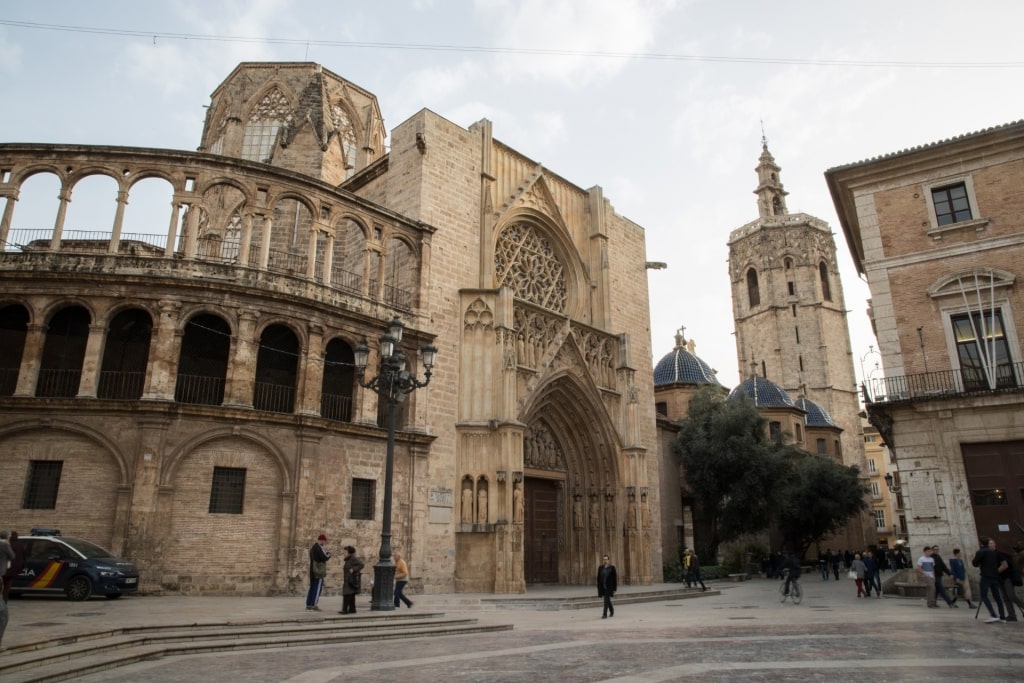
Valencia Cathedral
Back at ground level, venture inside the 13th-century cathedral for an architectural feast of gothic, romanesque and baroque styles. The Spanish landmark is packed with treasures, from the Holy Grail of Valencia, which pilgrims wait patiently in line to see, to the fresco-framed altar.
Just behind, the more “modern” Basilica of the Virgen de Los Desamparados is worth a peek, especially for Antonio Palomino’s impressive ceiling frescoes.
Wander in The Ciutat Vella (Old City)
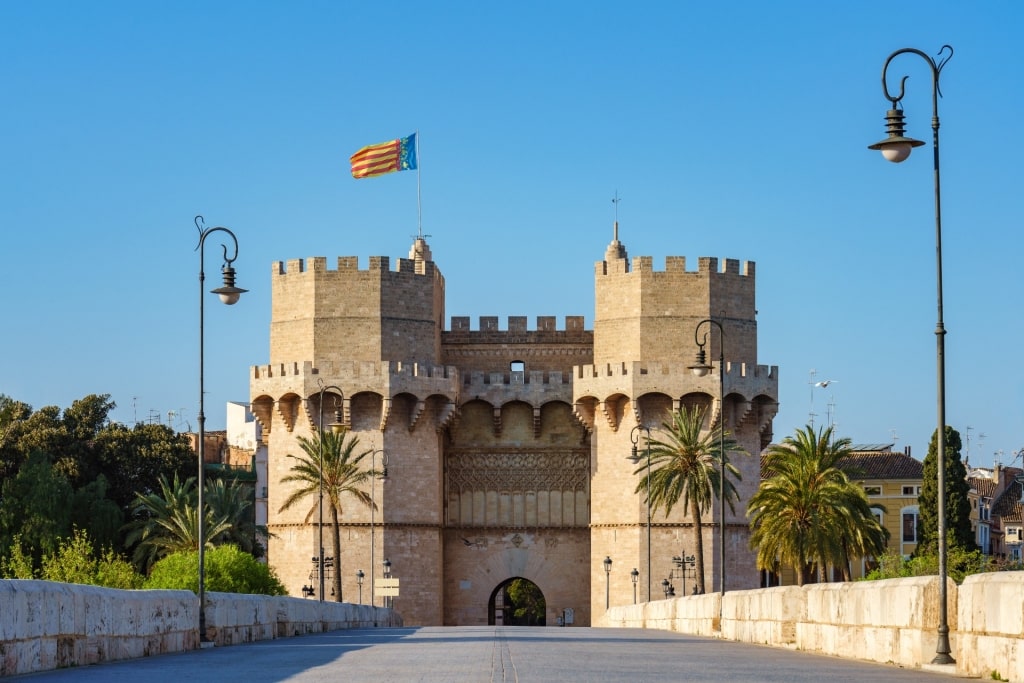
Serranos Towers
Valencia was once encircled by defensive walls, but now just two imposing gothic gates remain, the Quart and Serranos Towers, serving as the most dramatic entrances to the Ciutat Vella and El Carmen quarter.
Inside this medieval core, there are plenty of noteworthy attractions worth visiting. Yet, one of the best ways to experience the city’s oldest barrios (neighborhoods) is to wander between the pretty squares and storied sidestreets, spotting aged buildings—such as the climbable Baroque tower of Santa Catalina Church—and enchanting corners on the go.
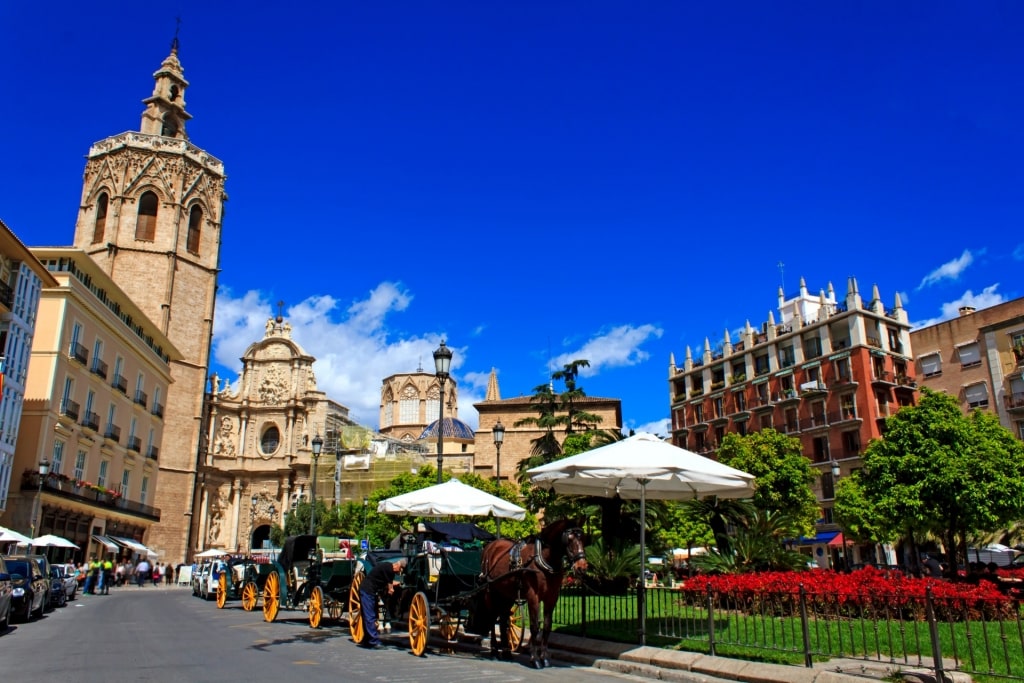
Plaza de la Reina
When you’re ready to sit and soak up the atmosphere, coffee in hand, pause at Plaza de la Reina or Plaza de la Virgen, two pretty squares with views of the cathedral and basilica, or the intriguingly round Plaça Redona.
Alternatively, head to the wide Plaza del Ayuntamiento, where the city’s underground flower market was once located. Here, the baroque-style city hall is home to the Municipal History Museum, perfect for a glimpse into the city’s past.
See the City of Arts and Sciences
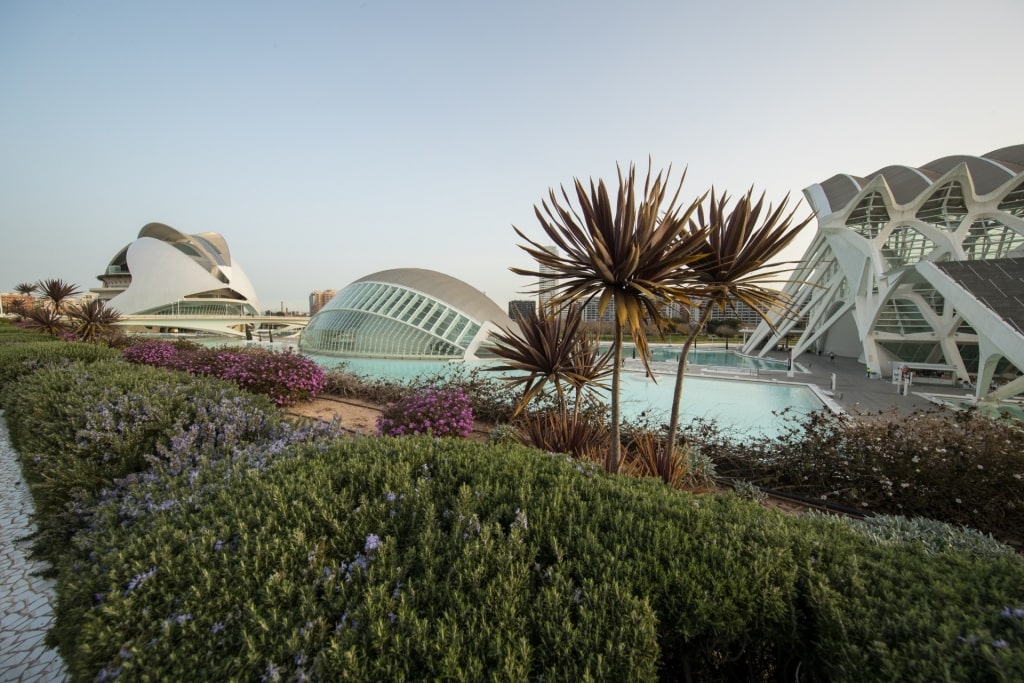
City of Arts and Sciences
Nowhere better encapsulates Valencia’s creative and futuristic side than the City of Arts and Sciences, a vast complex of scientific and cultural buildings surrounded by greenery. It is one of the most beautiful places in Spain.
The brainchild of local architect Santiago Calatrava, the multiple contemporary structures of whites and glass float like spaceships above reflective ponds or weave through palm trees toward the sky.
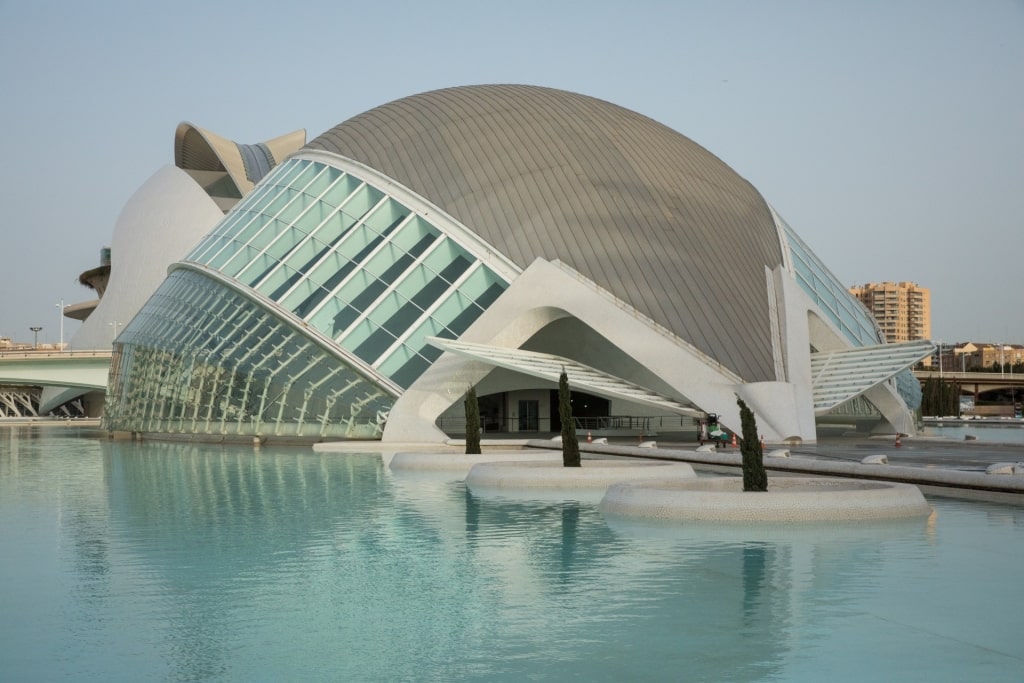
City of Arts and Sciences
Home to some of the most exciting things to do in Valencia, you’ll find plenty to entertain you inside the buildings. From the Umbracle, an expansive open-air garden packed with Mediterranean plants, to the city’s science museum and a 500-species aquarium, there’s more than enough in the cultural complex to keep you entertained for the whole day.
Read: Best Places to Visit in Spain for First-Timers
Learn About La Lonja (The Silk Exchange)
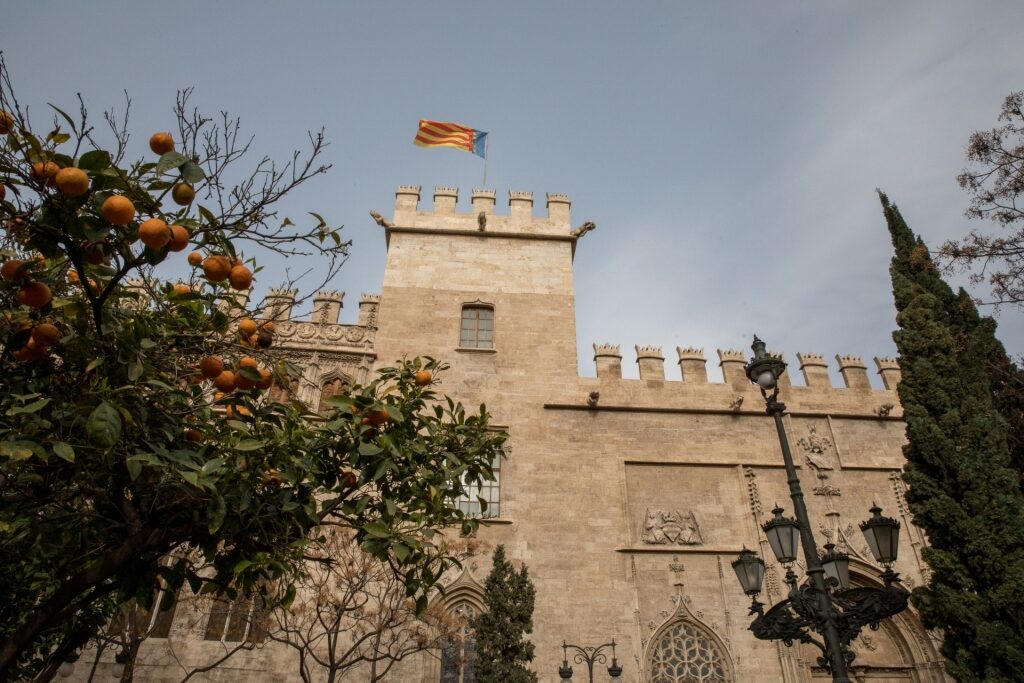
La Lonja de la Seda
Valencia’s role in the silk trade and the wealth that followed can be seen in all its glory at the UNESCO-listed La Lonja de la Seda, The Silk Exchange.
A grand, late-gothic affair, the complex of impressive buildings was constructed over a nearly 50-year period and completed in 1533. The most monumental of the spaces is the Sala de Contratación, where soaring twisted pillars stretch to the vaulted ceiling.
After being wowed by the main commerce hall, stroll through the compact, orange-tree-adorned courtyard and the upper gilded chambers. For further insight, visit the nearby Valencia Silk Museum, to learn more about the city’s silk story.
Pair Paella With Cava
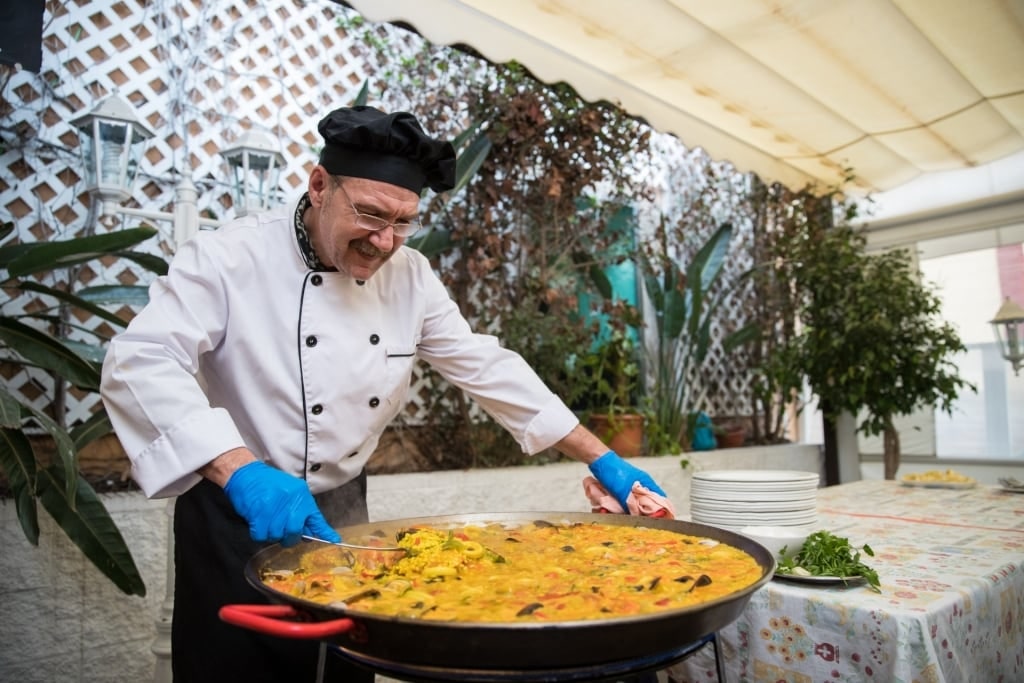
Paella
As the birthplace of paella, where better to try one of the most famous dishes that Spain is known for than in the city itself?
Using the region’s abundant supply of arborio rice and seafood—usually mussels and shrimps—the ingredients are combined into a fragrant Valencian dish, golden with saffron, served in a skillet.
For the perfect paella accompaniment, look no further than Valencian cava, a light, zesty and typically dry sparkling white wine.

Aigua de València
If you want your cava with a twist, though, order an Aigua de València, the city’s signature cocktail. Combining sparkling wine with gin, vodka, and orange juice, it’s a fruity and refreshing treat on a hot summer’s day.
Stand in Awe at San Nicolás Church

San Nicolás Church
Valencia is awash with churches and religious monuments, and choosing which sacred sites to visit is a challenge in itself. However, the Iglesia de San Nicolás de Bari y San Pedro Mártir de Valencia is well worth fitting into your schedule.
Nicknamed the “Valencian Sistine Chapel”, the 15th-century Spanish church is an impressive mix of gothic and baroque architecture, though it is the ceiling frescoes that steal the show.
Depicting the lives of the church’s namesake saints, the highly detailed works by Valencian master Dionis Vidal will lead your eyes to the decorated vaulted ceiling, where the heavenly paintings will leave you in awe.
Marvel at the National Ceramics Museum
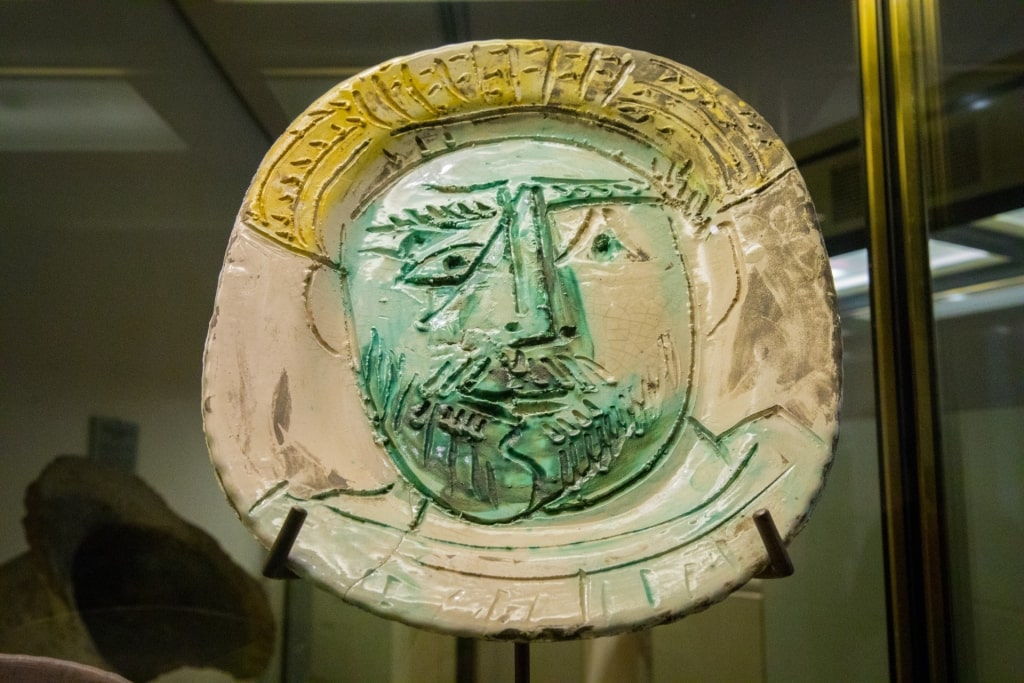
National Ceramics Museum
If you’re seeking a slice of opulence, one of the finest things to do in Valencia is to tour the Palace of the Marqués de Dos Aguas, home to the National Museum of Ceramics.
Since 1954, these regal and luxurious rooms have been open to the public, allowing the chance to see the country’s most extensive pottery collection. Covering a wide array of designs, from Valencian and Spanish works to international decorative arts—including pieces from artists including Picasso—the collection dazzles.

Palace of the Marqués de Dos Aguas
Of course, the affluent, gothic-style setting adds to the magic. Walking between the elegant rooms adorned with antique furnishings and aristocratic artifacts is a real treat, so much so it’s easy to get distracted from the ceramic collection itself.
Unwind at La Malvarrosa Beach
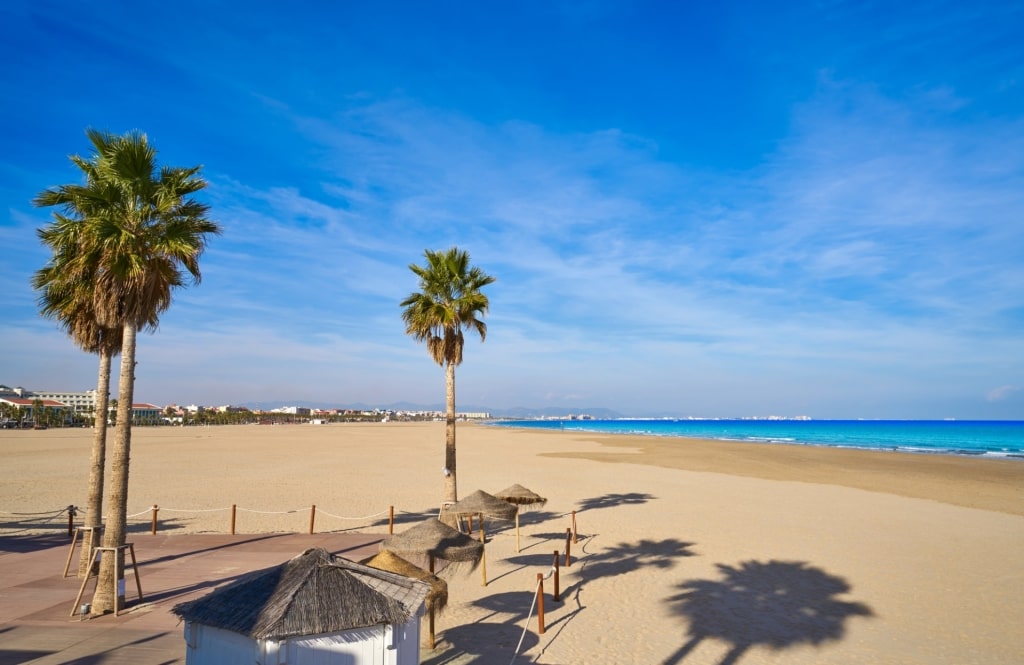
La Malvarrosa Beach
As a coastal city, Valencia is blessed with plenty of sun-kissed beaches along its Mediterranean coastline. La Malvarrosa is perhaps one of Valencia’s best beaches and is a tempting escape whether you want to top up your tan or slip away from sightseeing for a while.
With an extensive swathe of soft golden sands, parasols and loungers, and a plethora of cafés and bars along the promenade, La Malvarrosa has all the facilities you’ll need to unwind. For those with restless sandy feet, the ample choice of water sports offer plenty to keep you entertained.
Taste Local Flavors at Valencia Central Market
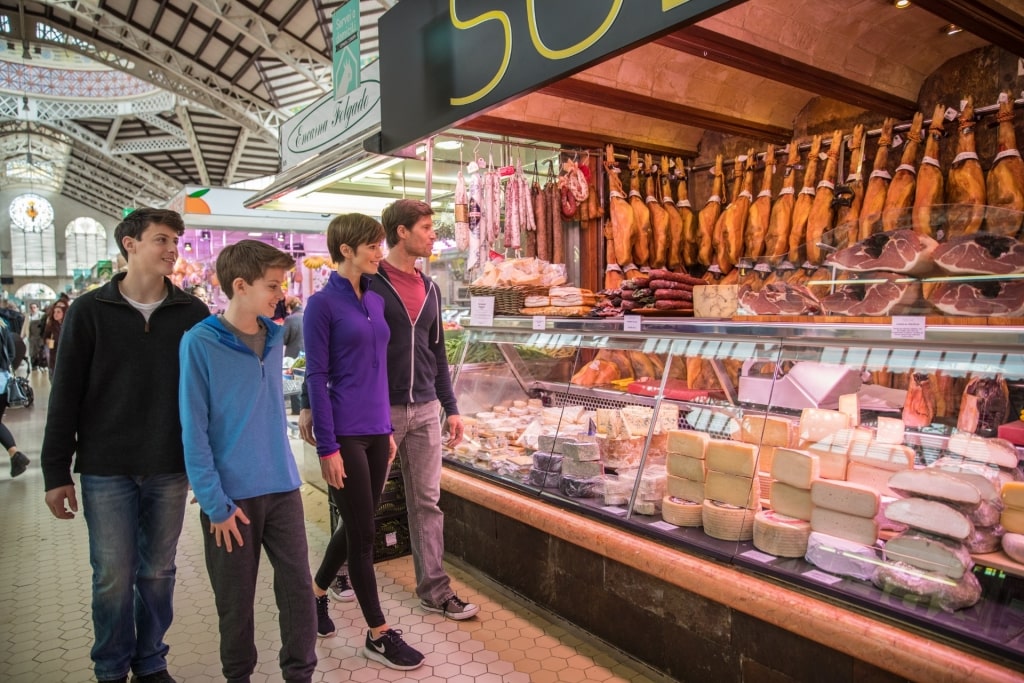
Valencia Central Market
At the heart of Valencia’s Old Town—figuratively and literally—Mercat Central has been a humming trading spot since 1839. Nearly a century later, in 1928, the cathedral-like Art Nouveau building that now occupies the location was inaugurated, creating the largest fresh produce market in Europe.
Inside the expansive iron and stained glass structure, the best of the Mediterranean’s bounty brightens the many stalls.
Whether you want to taste citrus fruits exploding with flavor, stock up on typical regional snacks, soak in the atmosphere at a café, or buy your own paella pan as a souvenir from Spain, a stroll through the Central Market is a rite of passage in the city.
Relax in the Turia Gardens
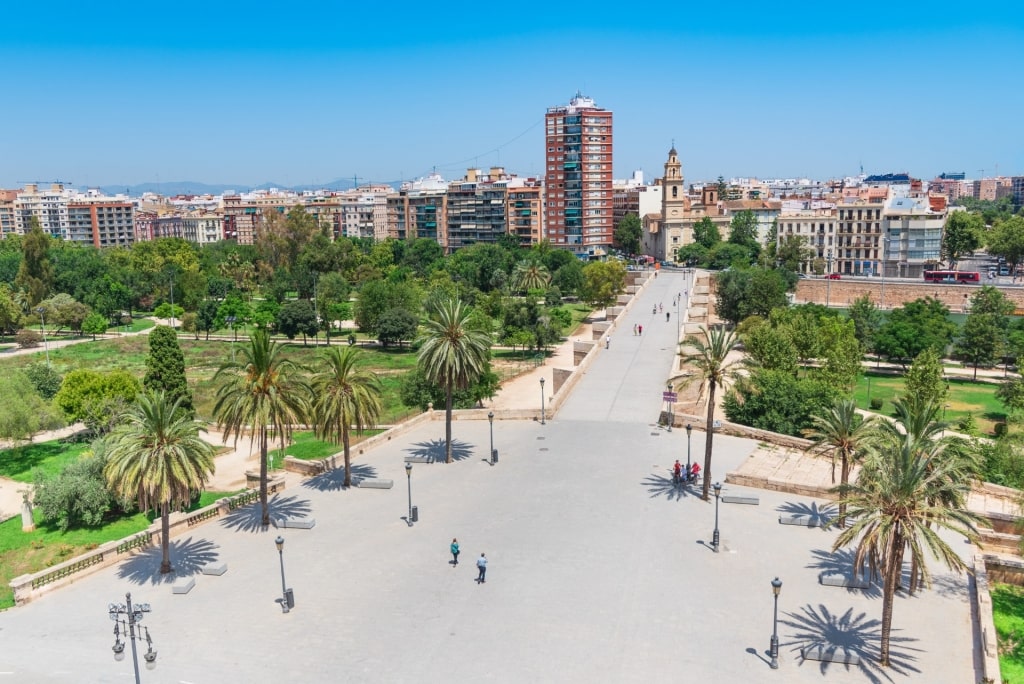
Turia Gardens
Snaking through the city like a river—due to the fact that this green ribbon lines the former Turia riverbed, the water of which was diverted in the 1950s following flooding—the Turia Gardens are around seven miles long, making them one of the largest city parks in Spain.
As you stroll the footpaths, a beautiful blend of ponds, palms, and scented orange trees greets you. Above, bridges cross the gardens, some dating back to the 15th century, providing a reminder of the mighty waters which once shaped the city.
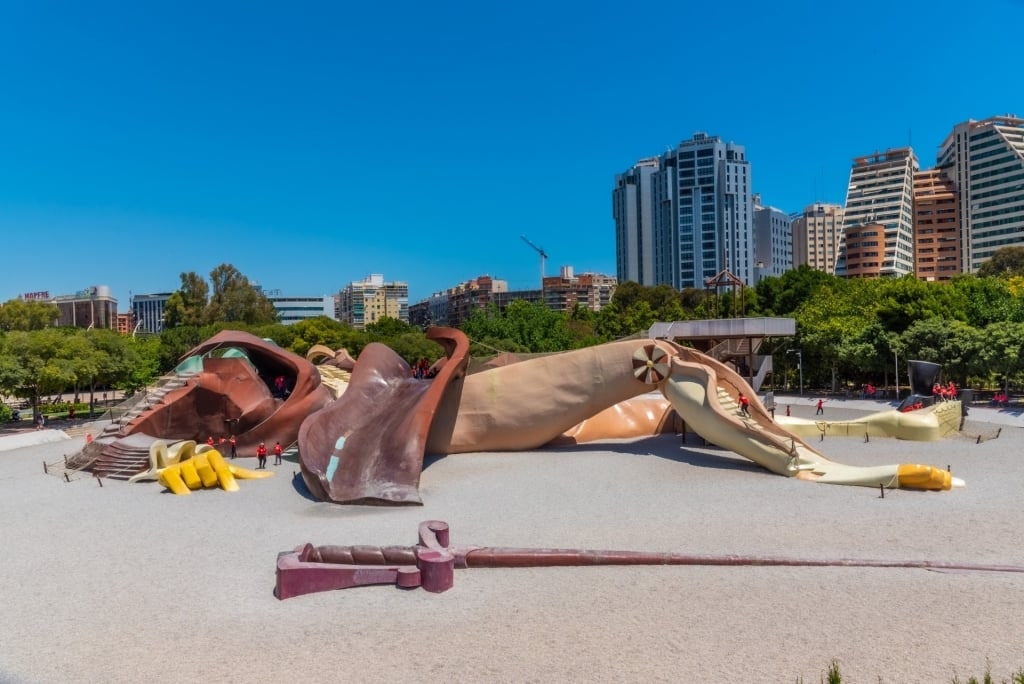
Gulliver Park
Pause at one of the cafés for some people-watching, enjoy a swan boat ride at Cabecera Park, and pay a visit to Gulliver Park, where a huge structure of the fictional character lies on the ground.
Explore the Museum of Fine Arts’ Collections
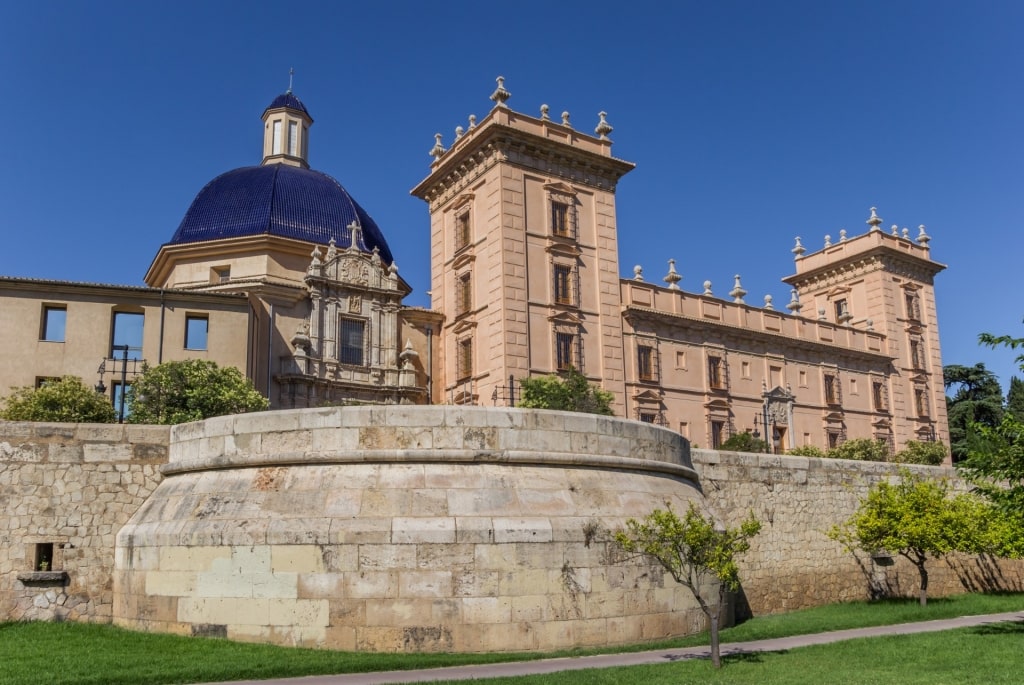
Museum of Fine Arts
Spain’s second-largest art gallery after Madrid’s Prado, Valencia’s Museum of Fine Arts is a wonderland of precious paintings. With works spanning from the 15th to the 19th centuries, the nation’s finest masters are represented, from Goya to Velázquez.
Housed in an old seminary college, the historic building has been respectfully restored to allow for the best presentation of some 2,000 works. Of particular local interest are the Renaissance collection, which features many celebrated pieces by Valencian artists.
Discover Roman History at La Almoina Museum
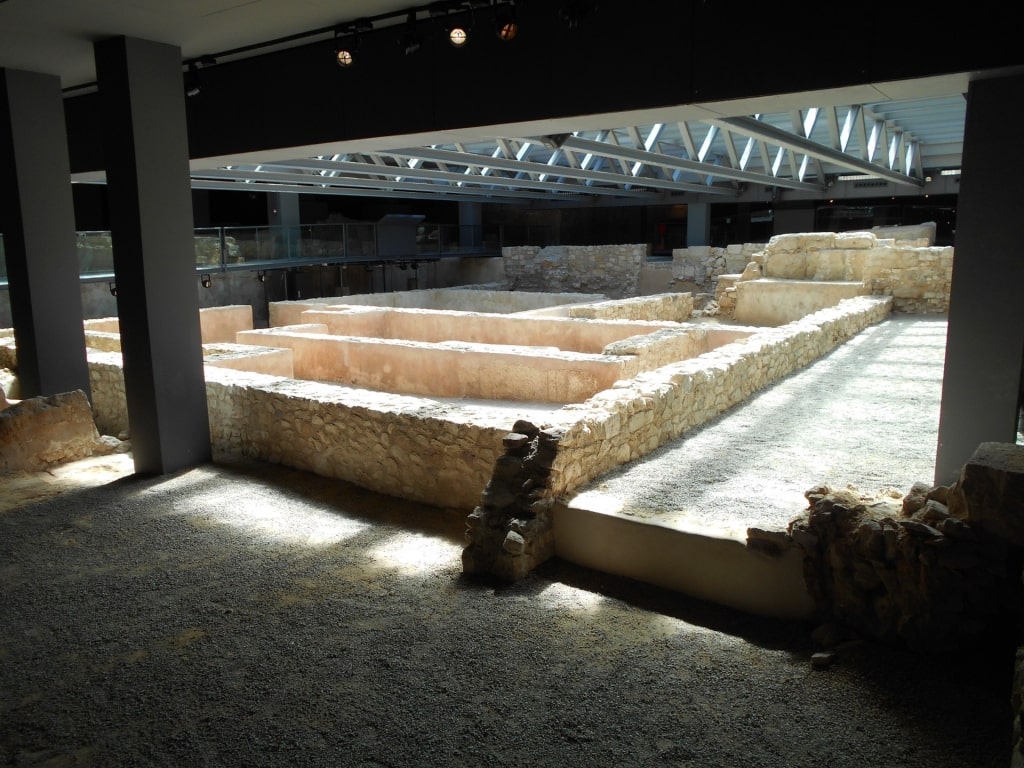
La Almoina Museum Photo by Simon Burchell on Wikimedia Commons, licensed under CC BY-SA 4.0
In 138 BC, the Romans arrived in Valencia—or Valentia Edetanorum, as they called it then—and built a settlement on the Via Augusta.
While it’s hard to spot reminders of the empire’s time around the city, the La Almoina Archaeological Museum houses many treasures from the Roman period, up until the Middle Ages.
From Roman busts, pottery, and the ruins of bathhouses and forum walls, to the remains of the Moorish alcázar, or fortress, you can take a journey through nearly two millennia of Valencia’s story as you walk between exhibits and archeological digs.
Thanks to multimedia reconstructions, and the translated panels, it’s easy to follow the informative overview of the city’s history.
Learn About the Fallas Festival
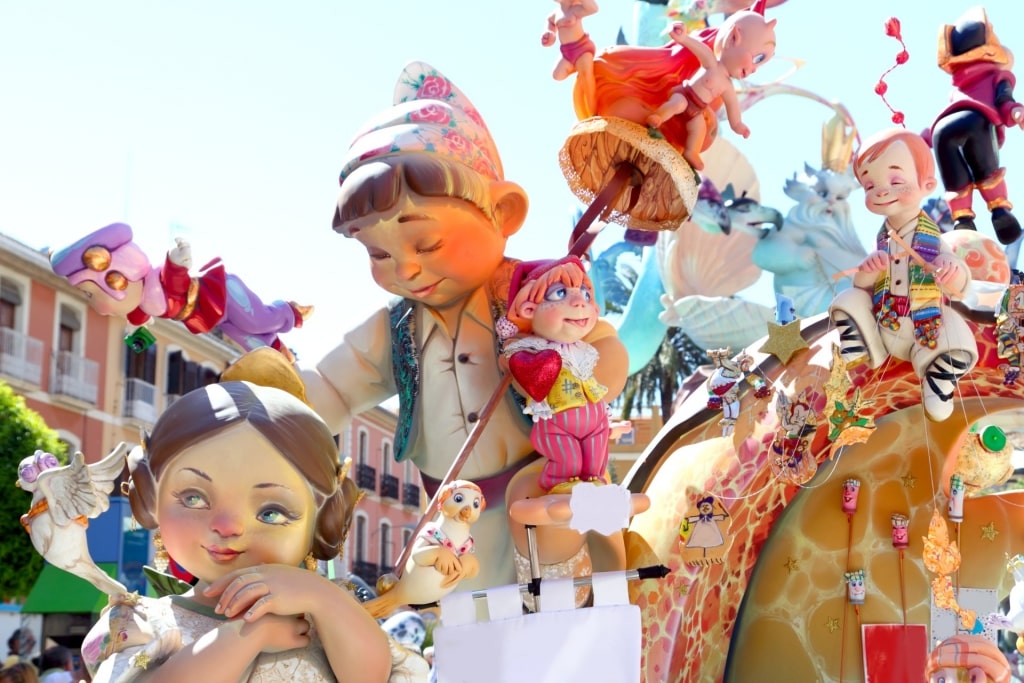
Fallas Festival
For a little over two weeks every March, Valencia is taken over by the traditional celebration of Fallas, now inscribed on UNESCO’s Intangible Heritage of Humanity list.
In remembrance of Saint Joseph, lively parades, performances, and the daily Mascletà—an impressive display of fireworks and color—bring even more life to the city’s streets, culminating in the great burning of the Fallas ninots (sculpted figures) on the final evening.
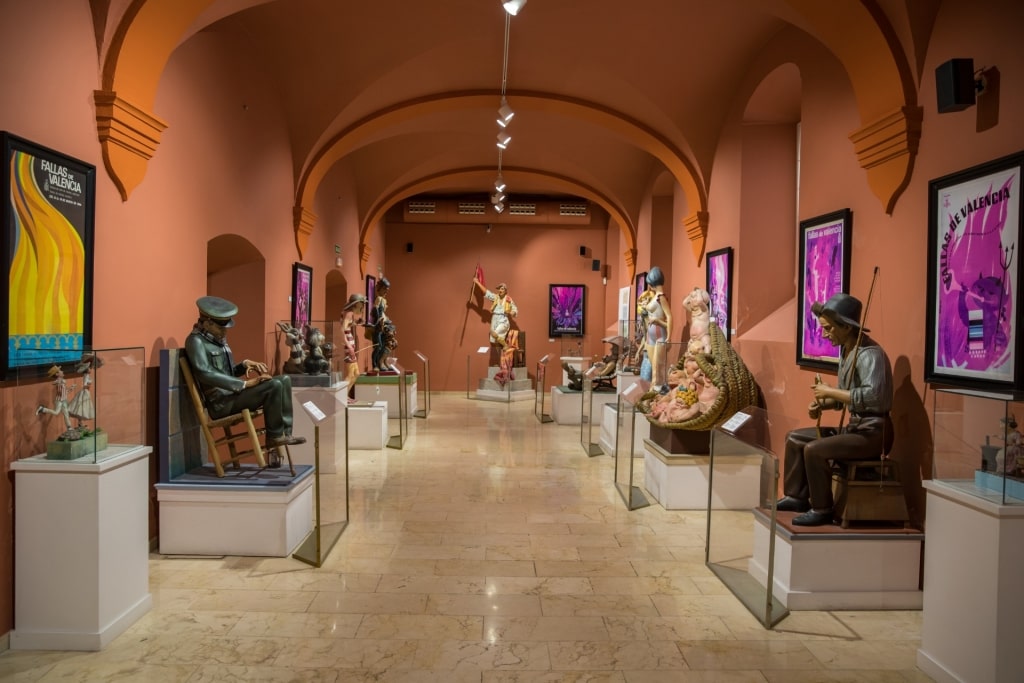
Fallas Museum
If you’re visiting Valencia outside of the festivities, you can still enjoy a taste of the celebrations at the Fallas Museum. Inside the dedicated exhibition space, you’ll find the ninots that have been “saved” from the ritual fires (two are spared every year), and with the collection dating back to 1934, there are plenty to see.
Spot Wildlife at Valencia Bioparc
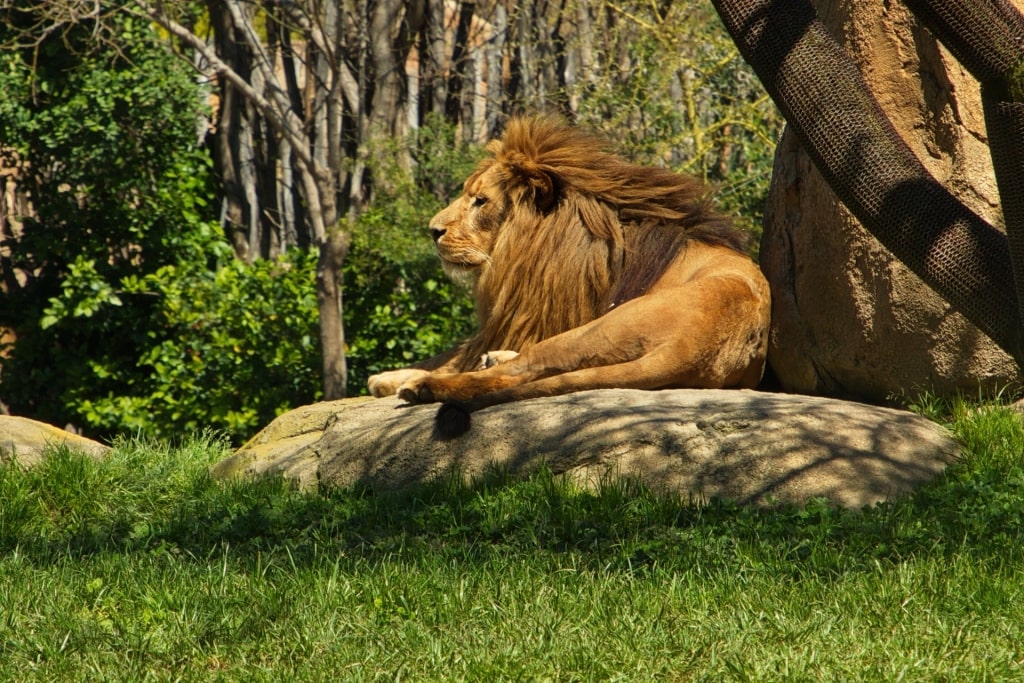
Valencia Bioparc
One of the most unusual things to do in Valencia is to witness the majestic animals of Bioparc Valencia, a wildlife park with a focus on conservation and education.
Making the most of Valencia’s Mediterranean climate, this vast outside space recreates the natural habitats of species from around the world. From the forest of Madagascar to the savannah plains, mammals, reptiles, majestic birds, and amphibians co-exists in a similar landscape to that of the wild.
Whether you’re spotting tropical birds in the tree canopy or spotting giraffes grazing, you’ll feel a world away from the city you’ve just left behind.
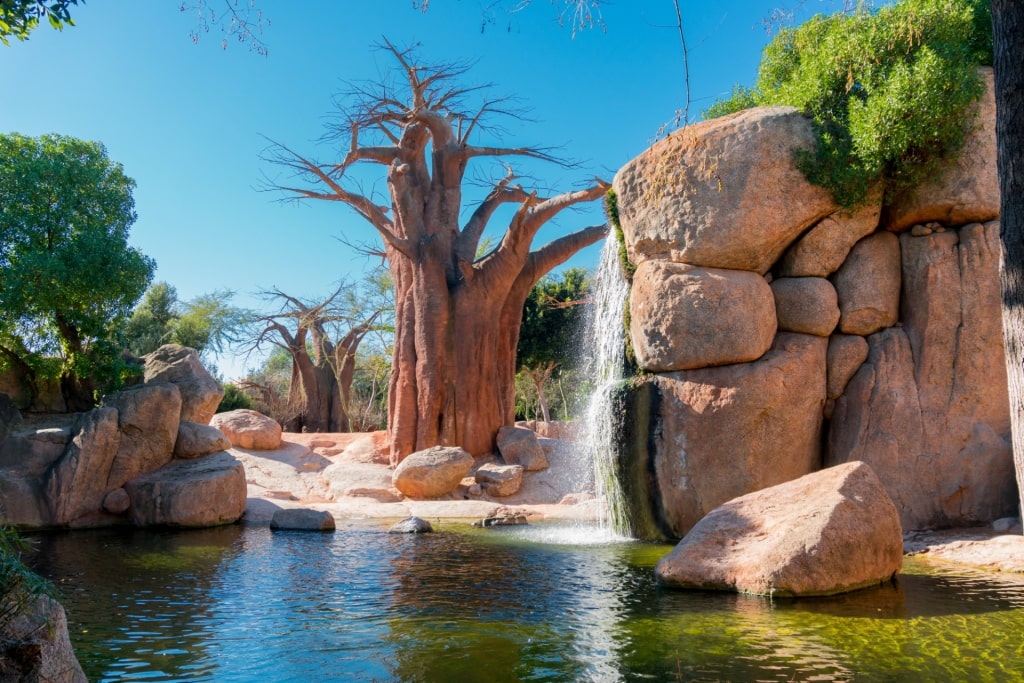
Valencia Bioparc
With a strict no-interaction policy, consideration and preservation of the species are of the utmost importance at Bioparc.
Witnessing the wildlife from a respectful distance promises a safe and sustainable experience for both animals and visitors, and it’s become a beloved Valencia attraction by travelers of all ages.
Try Horchata

Horchata
Since the 13th century, this typically Valencian beverage, with origins in North Africa, has become a go-to refreshing drink on a hot day.
Crushed and sweetened tiger nuts (the sedge plant’s roots) are mixed with cinnamon, citrus, and sugar to create the milky-looking blend packed with nutrients and vitamins.
While sipping horchata is a delicious treat on its own, it pairs perfectly with fartons, a sweet spongy bun that hails from Alboraya, a small town near Valencia.
Tour Lladró’s Porcelain Workshop

Lladró Museum & Boutique
A short 15-minute hop from the city center, Lladró Museum & Boutique in Tavernes Blanques has been producing world-class porcelain creations since the 1950s.
Founded by three brothers and rooted in their shared love for porcelain, Lladró’s first shop was in Valencia before the company became a significant player on the world stage.
On the tour, you’ll not only have the chance to see some of the most precious porcelain pieces—from complex human designs to award-winning vases—but also witness the workshops where the porcelains are still crafted by hand.

Lladró Museum & Boutique
You’ll need to book a visit in advance to tour the Spanish museum and shop, but if you have a passion for premium porcelain, you’ll relish the chance to see the collection spanning half a century of production and perhaps even find the perfect piece to bring home from the boutique.
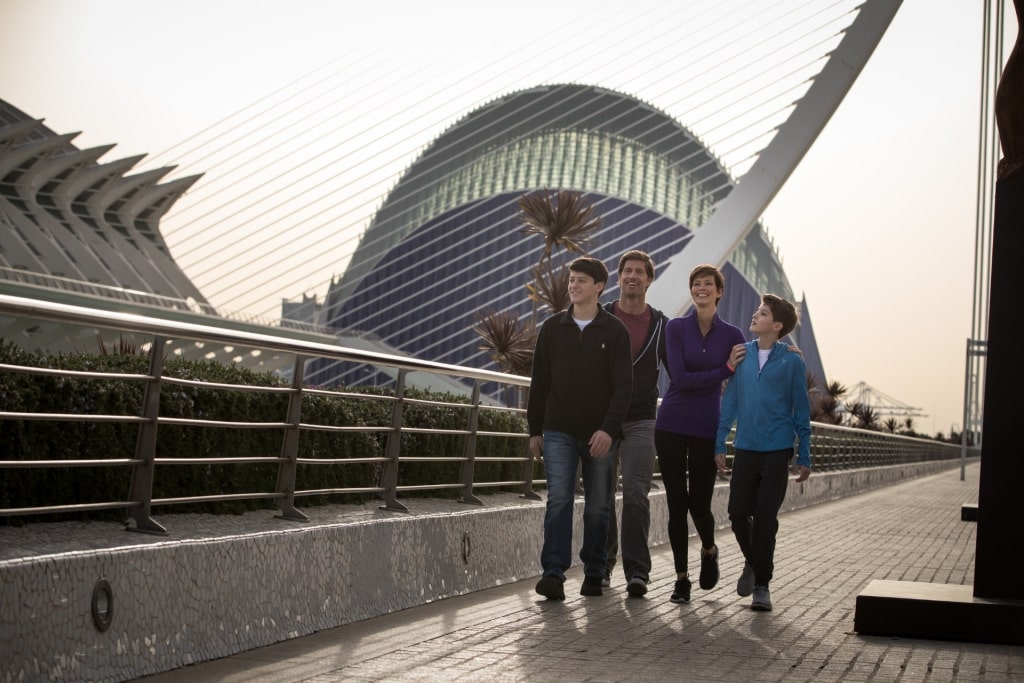
City of Arts and Sciences
Ready to experience the best things to do in Valencia, Spain? Browse Celebrity’s Valencia cruises to start planning your dream Mediterranean vacation.



